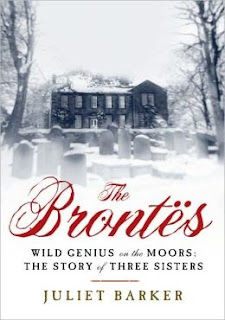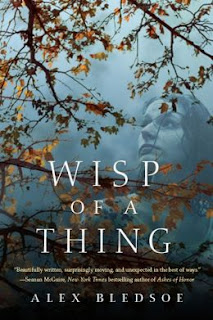Brian Fagan is an archaeologist, historian, and writer, who spent his early career in Central Africa investigating ancient farming villages. His experiences among subsistence farmers and in university

classrooms inspired him to write not only a series of college textbooks, which have been in print for nearly forty years, but also a series of books on climate and ancient societies, the latest of which is
The Attacking Ocean: The Past, Present, and Future of Rising Sea Levels. Fagan lives in Santa Barbara, California, with his wife and daughter, also three cats and a varying platoon of rabbits.
Recently I asked the author what he had been reading recently. Here’s Fagan's reply:
I spend a great deal of time reading dreary, impossibly narrow and dull academic literature, so I relax by reading a wide range of non-fiction. For some reason, fiction has limited appeal for me, except for the immortal writings of the English humorist P.G. Wodehouse, which never pale. The task of choosing interesting  non-fiction gets ever more arduous, given the tidal wave of (often mediocre) newly published works on every subject imaginable. But here are some of my favorites.
non-fiction gets ever more arduous, given the tidal wave of (often mediocre) newly published works on every subject imaginable. But here are some of my favorites.
Some months ago, I was asked to review Jeffrey Bolster’s The Mortal Sea: Fishing the Atlantic in the Age of Sail. The author is a sailor and a fisherman, who has been out there and done it, so his account of cod fisheries and overfishing is truly authoritative. He makes the case that overfishing has afflicted the North Atlantic fisheries from the very beginnings of the lucrative European cod trade, fueled by Catholic doctrines that one ate fish on Fridays and Holy Days. This is a beautifully written, densely argued and documented book, but is something I’ve been returning to again and again.
 I love Robert Massie’s histories, which display profound, detailed scholarship, yet roll along in an orgy of vivid story telling. Castles of Steel is about dreadnoughts and World War naval warfare, written with a wonderfully analytical eye and character sketches that really give one the essence of the key players on both sides. Massey really takes you back to the days when radar was unknown, gunnery was everything, and battle tactics were still oddly reminiscent of Lord Nelson’s day.
I love Robert Massie’s histories, which display profound, detailed scholarship, yet roll along in an orgy of vivid story telling. Castles of Steel is about dreadnoughts and World War naval warfare, written with a wonderfully analytical eye and character sketches that really give one the essence of the key players on both sides. Massey really takes you back to the days when radar was unknown, gunnery was everything, and battle tactics were still oddly reminiscent of Lord Nelson’s day.
Robert Macfarlane is an English writer, who writes about places and walking with passion and sensitivity. I’ve been returning again and again to his The Old Ways, which describes his  wanderings over all manner of rural landscapes, especially in the British Isles. Macfarlane takes me back to the countryside of my youth, where the hectic pace of urban life was far away and there weren’t so many people around. Few people have moved me so profoundly with writing that really makes you feel you are there, alongside him, sleeping in the open, contemplating the view, looking for vanished track ways. I was intoxicated by the book, and still am.
wanderings over all manner of rural landscapes, especially in the British Isles. Macfarlane takes me back to the countryside of my youth, where the hectic pace of urban life was far away and there weren’t so many people around. Few people have moved me so profoundly with writing that really makes you feel you are there, alongside him, sleeping in the open, contemplating the view, looking for vanished track ways. I was intoxicated by the book, and still am.
Wade Davis is another of my favorite writers, a love affair that began with his One River, a remarkable book on the rain forest and the Amazon Basin. Now I’m into his Into the Silence: The Great War, Mallory, and the Conquest of Everest, a compelling account of the early exploration of Mount Everest, which culminates in the story of Mallory and Irvine.  What makes Davis’s book so remarkable is that he has walked and traveled the rugged country around the great mountain, has interacted with the local people, and used his anthropological background to probe deeply into the relationship between visiting mountaineers and their native hosts. The result is a masterpiece of historical, anthropological and travel writing, which makes obscure explorations of a century ago come alive in the context of an impending Armageddon. Again, this is a book I dip into again and again, to revel in the author’s easy, yet meticulous style, and his priceless ability to get to the nub of complex, often controversial issues. As a writer, I’m humbled by his achievement.
What makes Davis’s book so remarkable is that he has walked and traveled the rugged country around the great mountain, has interacted with the local people, and used his anthropological background to probe deeply into the relationship between visiting mountaineers and their native hosts. The result is a masterpiece of historical, anthropological and travel writing, which makes obscure explorations of a century ago come alive in the context of an impending Armageddon. Again, this is a book I dip into again and again, to revel in the author’s easy, yet meticulous style, and his priceless ability to get to the nub of complex, often controversial issues. As a writer, I’m humbled by his achievement.
Visit
Brian Fagan's website.
The Page 99 Test: Fagan's The Great Warming.
The Page 99 Test: The Attacking Ocean.
--Marshal Zeringue
 Amber Kizer is the author of the popular Meridian trilogy.
Amber Kizer is the author of the popular Meridian trilogy.though I’m still in the early stages of stewing all this information into fiction. A lot of the idea came to me while working on the survival research for A Matter of Days—so at least in my brain it’s spinoff reading from that project. There’s always an element of fun in work research so I don’t separate out my reading piles.
historical romance Along Came a Duke going—it’s witty, dainty and enjoyable. Ray Bradybury’s Green Shadows, White Whale is a book that makes me think while laughing—hard to walk that line but he does it beautifully. And Joe Hutto’s Illumination in the Flatwoods about raising wild turkeys rounds out my current stack with nonfiction and the character of nature and wildlife. I have about fifteen more books started and going in various stages but these are the ones that have their hooks in me at the moment.





















































